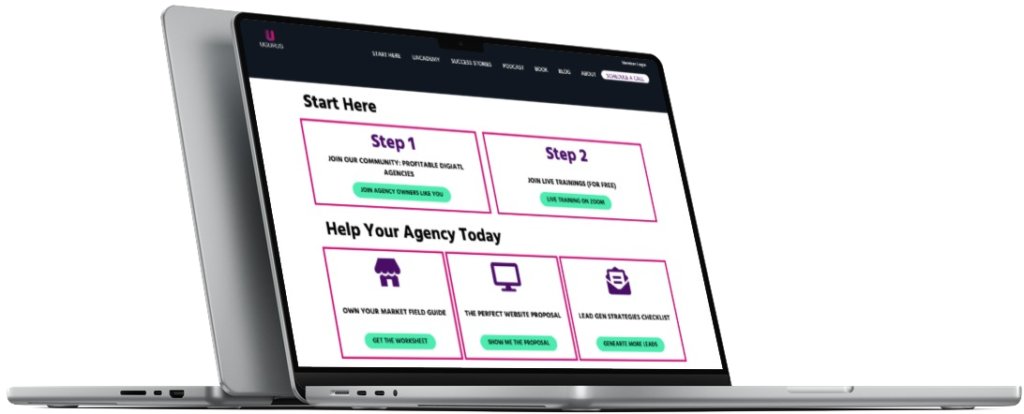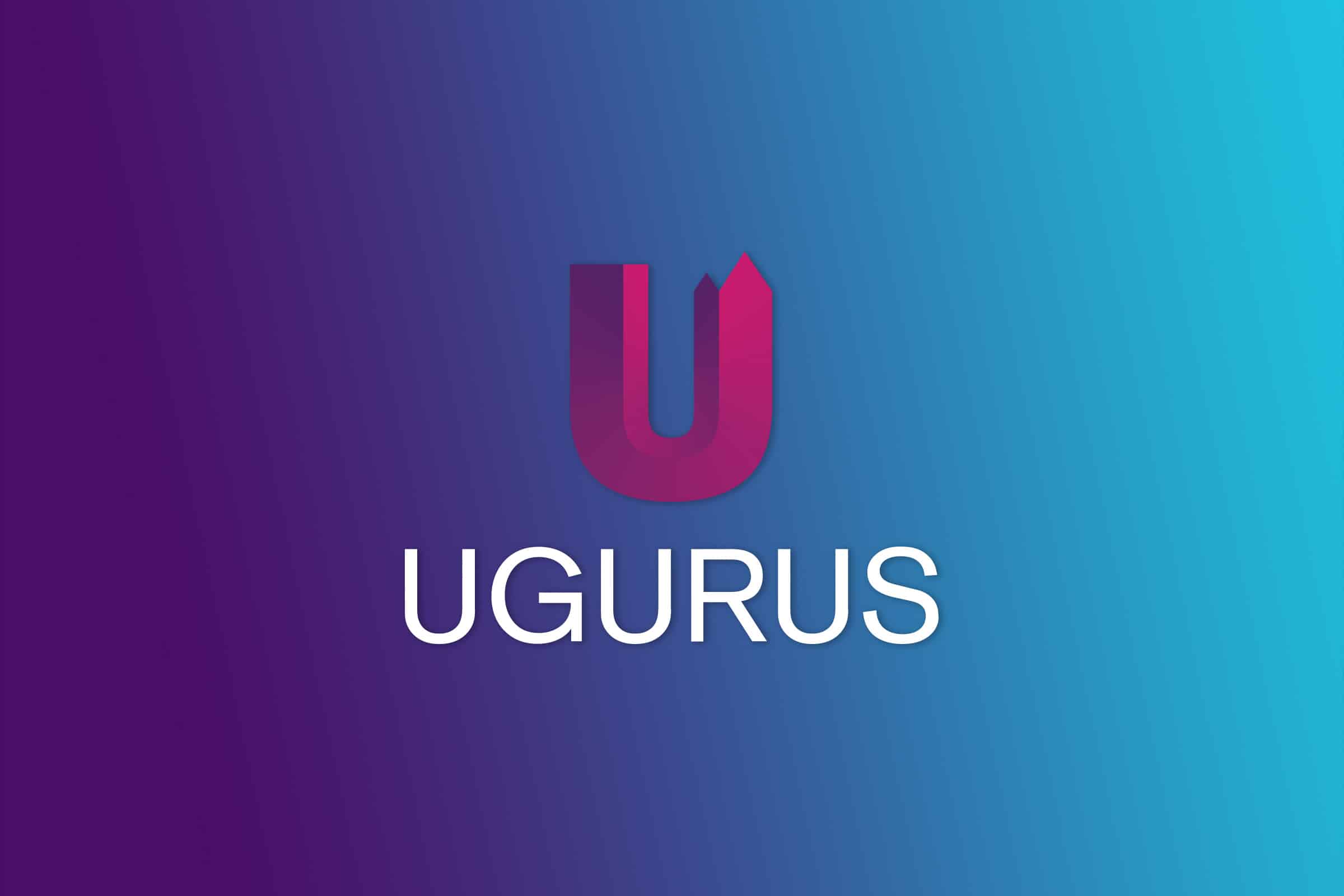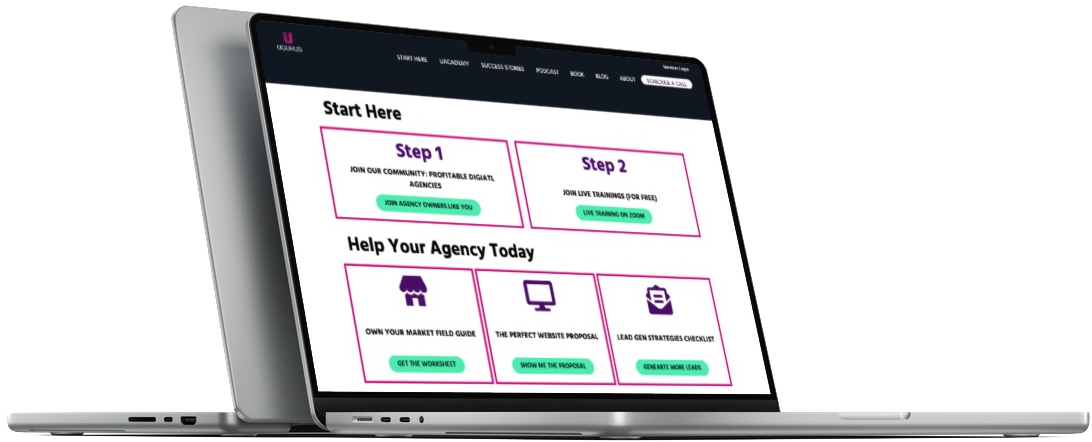Building trust and creating value are the two key things you need to do for potential clients. You can’t do that if you only interact with them once.
Your process needs to carry all of the weight and stress of sales for you.
The problem is that many digital agency owners don’t have a process for dealing with client interactions. This is especially the case for prospective clients. You open contact and jump straight into the pitch.
Then, you don’t talk to the client again.
That one interaction isn’t going to get you very far. If you’re trying to sell a $10,000 website, branding, or digital marketing project off one interaction, you’ll get a bunch of clients saying “no thanks”.
They’re going to go with the agency that keeps speaking to them.
Your digital agency needs a multi-interaction sales model to keep building up the trust so the client wants to work for you.
The Lock That’s Actually the Key
Do you know how a lock works in boating?
A lock is basically this big mechanism that connects two bodies of water that are at different elevations.
What happens is that you guide the boat into the lock and close the mechanism. Then, water pours into the lock to slowly elevate the boat to the correct level.
Once that’s achieved, you open the lock at the other end and carry on sailing.
I bring this up because it’s the perfect metaphor for your relationship with potential clients.
You start out right at the bottom level. Your goal is to elevate the relationship so that you can sail off into the distance with a $10,000+ project under your belt.
To achieve that elevation, there are multiple stages (or interactions) that you need to go through.
Just think of this lock as your key to securing the next big project for your agency.
The Importance of Multiple Interactions
Why does a customer say “no thanks” or “I’m going to look at other quotes”?
It’s because you haven’t built enough trust. You haven’t spent enough time interacting so there’s no relationship.
These things don’t just come from your rapport. Building trust and creating a relationship also comes from a lot of the non-verbal cues that clients pick up on.
How present are you in the meetings that you hold?
Are you so excited about the project that you can’t wait to speak to them again?
Is there any energy coming from your camp?
These are things that clients notice over the course of multiple interactions, regardless of the things you say.
The idea is to build momentum with every stage. By the end, the client needs to feel excited about the prospect of working for you. They’re almost chomping at the bit to get started, which opens the door for you to charge a little more for the project.
It’s this relationship building that UGURUS client Shannon C. didn’t have in her agency.
Shannon made huge changes to how she elevated relationships once she started working with UGURUS. She added several new interactions to the process, which had a huge effect.
Before, she made lots of mistakes. As she puts it: “I would email my proposal <and> I wouldn’t follow up. I wouldn’t have that relationship built.”
Once she added more interactions, she moved away from the $2,500 projects she previously worked on. Now, her digital agency can charge $10,000 or more without concerns.
It’s the momentum from multiple interactions that builds tension in the sales process. With each interaction, you elevate the relationship until the client feels like they have to work with you.
How Many Interactions is Too Many?
It’s possible to take the multiple interactions idea too far.
Let’s say you’re preparing to pitch for a $10,000 project. If you’re going for 10+ interactions before you get to the pitch, you’re probably doing too much. The client’s going to end up waiting on a pitch that never comes or choosing your competitor.
I think you can get by with somewhere in the ballpark of four to five interactions for projects of that size. That’s especially true if you’re new to the process and don’t have a reputation in the market yet.
You could even pull that down to two or three if you already have authority and loads of fans.
However, that changes as the project value goes up. It’s when you’re pitching for the $25,000 or $50,000 projects that you’ll need six, seven, or even more interactions.
It’s about striking a balance. You don’t want to waste time talking when you could move forward with the project. However, you also don’t want to jump the gun and start trying to sell before you’ve built the relationship.
Introducing Our Interaction Model
So, five stages work best for elevating your relationships.
You’re probably wondering what those five stages are. That’s where my Interaction Model can help you. My experience shows me that elevating a relationship so you can land a $10,000 project looks a little like this.
Step #1 – The Unscheduled Interaction
An unscheduled interaction involves making contact without arranging a slot for the call in advance. Cold calling is probably the best example here. However, you can also have an unscheduled interaction with someone who’s sent their details over.
For example, someone may have hit one of your landing pages and sent over their information. They’re not “cold” but the first interaction also isn’t scheduled. They might be collecting the kids from school or washing the dishes when you call.
This works both ways too. The client might call you up on the phone, so there’s nothing scheduled on your end either.
Either you or the client wasn’t expecting the interaction. And that means this isn’t the best time to start qualifying or selling to that client.
The unscheduled interaction is more a chance to open the dialogue and establish the basics of the new relationship. You’ll use this to move into a more scheduled interaction later.
Step #2 – The Scheduled Qualification Call
You’ve had your first interaction and the client’s thinking about coming on board.
But it’s not just the client’s decision. You need to make sure they’re a good fit for your agency. That’s where the scheduled qualification call comes in.
This is basically an interview that you schedule with the client. You’re looking to establish what they want and whether they’re at the right point for you to want to work with them.
It’s something that UGURUS client Nancy H. uses to great effect.
Nancy still worked full-time for another company when she came to UGURUS for help. She offered digital services on the side but didn’t focus on the business.
It was only after attending Bootcamp that she gained the courage to commit herself full-time to her agency.
She says that learning about qualifying prospects really helped her to nail down her value.
Within a few weeks, she’d already told a prospective client that “this is not a good fit for me”. The client was just a startup and she wants to work with bigger fish.
Like Nancy, you have an ideal client profile, especially if you’re shooting for $10,000+ projects. The qualifying call helps you to learn more about the client and what they can offer you, as well as what you can offer them.
Step #3 – The Discovery Call
This is where you start digging deeper into the client’s problems.
It’s about identifying true needs and real problems for the client. You’re looking to pick out the root causes of those problems to show the client that you understand the issue.
From there, you consider some potential solutions to those problems. But you don’t go into too much detail during this interaction. You’re just looking to anchor some potential solutions to the client’s needs to further establish your agency as a good choice.
Step #4 – The Solution Presentation
You take another step away after the discovery call and start to come up with a defined solution.
Your next interaction involves presenting that solution to the client.
Again, you’re not launching into the full sales pitch here. Instead, you’re going for the soft pitch.
You’ll present a potential solution or two to the client. You’ll also discuss a budget range so that the client has an idea of what to expect from the final interaction.
Step #5 – The Proposal Presentation
You’re going to do this live and in front of the client (either in-person or over a web conferencing platform like Zoom).
The proposal presentation is where you pull all of the information you’ve gotten from the previous interactions together. You’re going to present the solution you’ve come up with to a client who trusts you.
That’s going to make it much easier for you to demonstrate the value that you’re offering so you can shoot for the $10,000+ project value.
It’s All About the Process
I said at the start that any good process takes the weight off your shoulders.
That’s what my Interaction Model does for you. You get a rock solid framework to follow that will help you land higher-paying projects.
There’s a lot more that I can teach you. For example, I also have my Interaction Model 2.0. Plus, I can show you how to add so much value to your discovery calls that you can charge for them.
But those are all pro strategies.
If you have a digital agency or freelance business, you need to put the foundational strategies in place first.
UACADEMY can help you with that. Apply to join UACADEMY today to get your FREE strategy session.
GET YOUR FREE AGENCY ACCELERATOR PACKAGE






